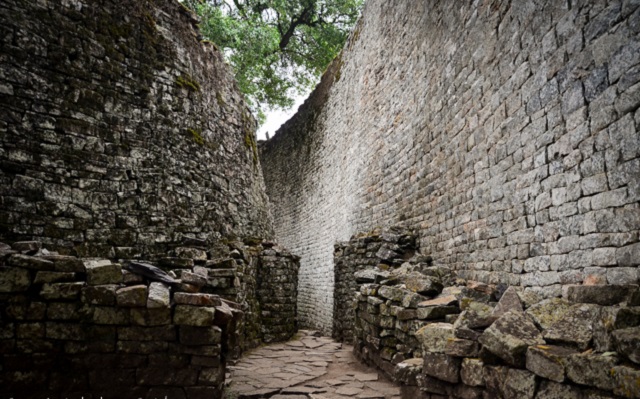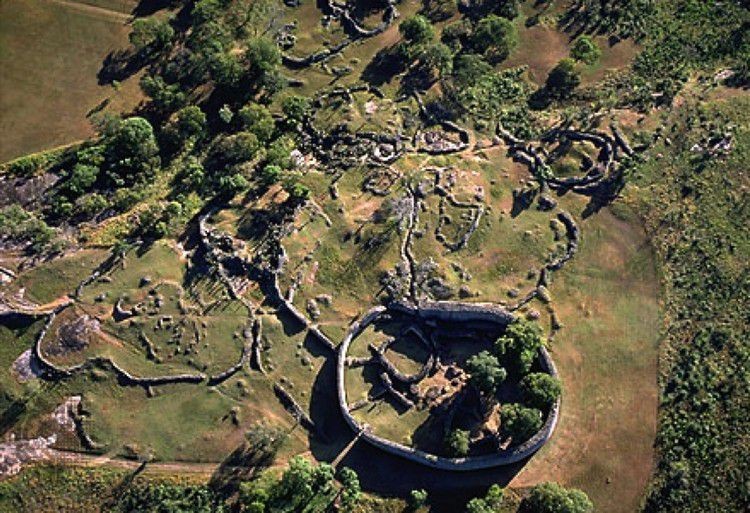
The Sunday News

Phathisa Nyathi
AFTER several weeks peering at the heavens, we are in a position to pilot our spaceship down towards the Great Zimbabwe monument, not to land inside, but outside of it to get some appreciation of the site where it was located. If Great Zimbabwe is a mirror of the cosmos, we should, before embarking on the return journey, identify the one important lesson gleaned from gazing at the heavens. It is that lesson, hopefully one that may assist us pin down the overarching theme resident at Great Zimbabwe.
To arrive at the important observation or lesson, we need to remember the attributes of cosmic bodies and have them complement attributes or elements of African Aesthetics. We have observed that African ideas of beauty are informed by cosmic attributes such as circularity, curvilinearity, movement, rhythm, equilibrium, balance, symmetry and some sense of unity. Further, we observed that these are attributes of art and at the same time they are attributes of life. There is thus some common link or denominator among various elements: African Aesthetic, beauty, art and life.
In summary, what is it that emerges from our close encounters with the cosmos that we may look for when we land on the Great Zimbabwe monument? When that common denominator is pinned down, isolated and identified as being identical with the cosmic theme, then we may arrive at the conclusion that cosmic reality is mirrored at the Great Zimbabwe monument.
Beyond the numerous attributes that we isolated, the cosmos seems to possess an important quality of eternity. Astronomy tells us that the universe or cosmos has been around longer that 14 billion years. We have no reason to doubt that age.
Humankind, when he first emerged on the planet, the cosmos was already in place. Further, Astronomy informs us that the universe is expanding all the time. Cosmic bodies are moving out at alarming speeds.
There are words that we have been using as representing eternity, continuity, endlessness, immortality and perpetuity. The cosmos seems to posses this very important quality. Given its age and the age of humanity on earth, the cosmos may be taken as immortal and eternal. We do not know when it came into being, nor do we know when it will come to an end. Two African decorative symbols embody these ideas. One of these is the spiral, represented among the Shona people by the ndoro, or conus shell. The ndoro is one of the pieces of regalia that a new chief acquires upon his installation. The embedded message is about retaining the chieftainship within the same old chiefly lineage which, though it’s beginning is known, its end is not envisaged. The lineage is set to rule for eternity. It is a ruling lineage with a beginning, but hopefully, no end. This is the message of the spiral. The Milky Way possesses four spiral arms exactly as captured in Ndebele and Tonga ilala basket decorative symbols. These are two cultural examples where the heavens are replicated on the cultural plane on earth. As above, so below.
The other decorative symbol, and by so referring to it, we are implying that it is beautiful, is the circle. We do not decorate and end up with something ugly looking. The circle is another symbol that captures the idea of eternity or endlessness. A circle, in Black Africa, represents eternity, it has no beginning or end. As we might not know when the cosmos started, we may surmise that the circle, more than the spiral, captures more accurately, the African idea of eternity whose beginning and end are not known. As we know it, the cosmos is eternal but may not be increasing its constituent parts. It is occupying more space as it expands. It is our knowledge of the cosmos which is limited. If new bodies are indeed coming into being, that would tally with what is happening on earth. Our population is increasing.
After taking this circuitous route, we are now at the point where we should identify our single greatest lesson or theme in the heavens. It is eternity. It is continuity. It is endlessness. It is immortality. These are several words essentially expressing the same idea or some related ideas. We need to express the same idea in another way, a way that may be identifiable on earth, and more specifically at the Great Zimbabwe monument. But as we do so, let us not forget that our planet earth is part of the cosmos. We would expect therefore, to see it share in common certain attributes that we have identified on the cosmos.
How is human eternity attained? The original human beings who appeared or were created on earth are no longer found on the planet. Human beings that exist today are descended from the original inhabitants of Mother Earth. How did it happen that the progeny of the originals are still found on earth? What characteristics do humans possess that allow them to multiply and thus attain eternity or endlessness? If there is endlessness in the cosmos, and indeed there is, we expect to find the same attribute on earth and applicable among human beings.
Human beings, like the cosmos in general, do attain eternity, continuity and endlessness. How does the universe or cosmos attain that quality? If, through our inadequate cosmic knowledge, we fail to answer the vexing question that does not take away the fact that the universe does possess the quality of eternity. It could very well be as a result of resistance to weathering and erosion coupled with constant change which allows it to acquire eternity. Rebirth or regeneration as seen happening to the moon, are associated with acquisition of eternity.
However, what is easier to deal with is how human beings on earth attain eternity. This is something I captured in the adage, “Individuals perish. Humanity is forever.” It boils down to two words: SEXUAL REPRODUCTION. This is nature’s way that allows human beings, indeed the majority of other animate things, to achieve eternity, endlessness, immortality, continuity and perpetuity. As we begin our descent towards Great Zimbabwe, this is the theme that we are taking from our ephemeral cosmic sojourn. When we land, we shall inspect the colossal Great Zimbabwe monument to see whether the theme of eternity is one of its resident attributes. If yes, how is eternity represented and expressed in the monument?
Initially, we shall consider the physical location of the monument. It is our argument that the choice was as a result of some conscious decision or choice. Why did the creators and builders of Great Zimbabwe choose that particular site? We shall seek to get into their minds to glean ideas and perceptions that led to their choice.




